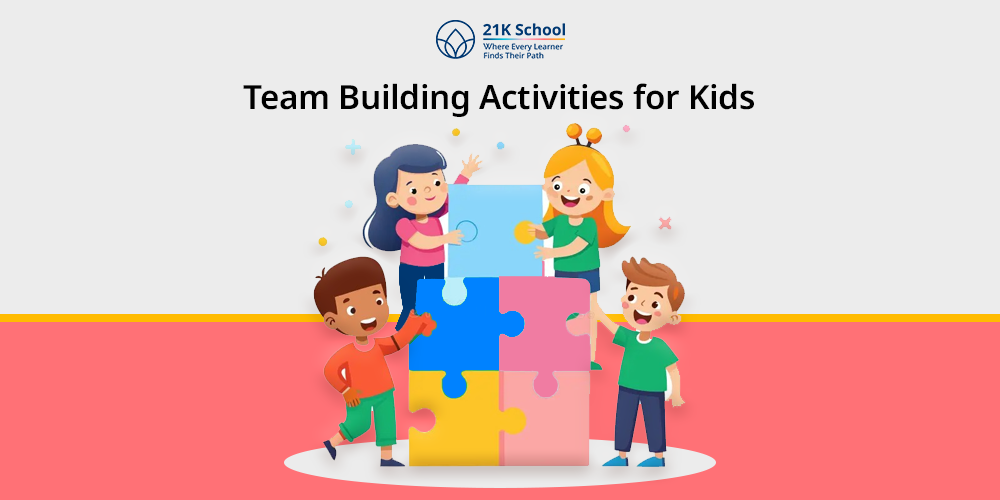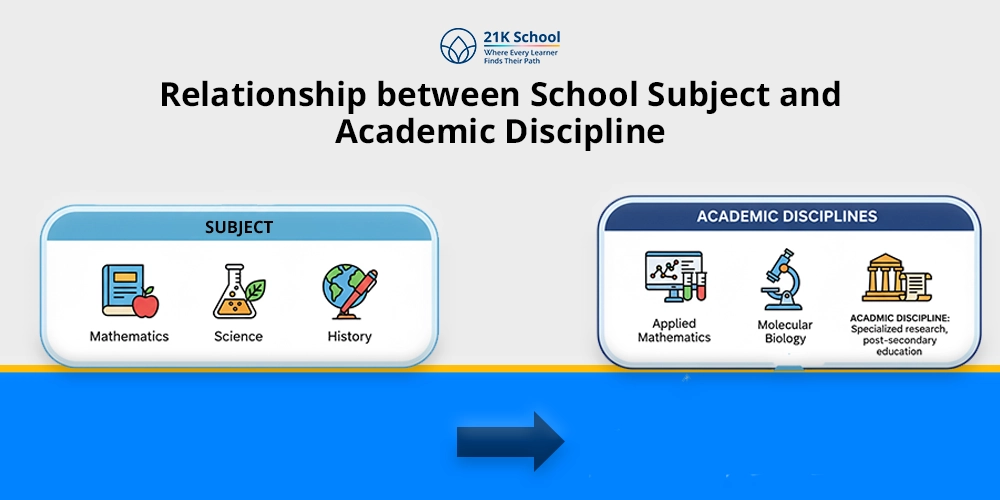
Have you ever wondered how group work can help students cooperate?
Team-building activities help build cooperation among peers. Activities like trust walk, limbo relay, scavenger hunt, tug of war, etc., are beneficial for students in promoting effective cooperation.
Different activities are added to study sessions to make students feel closer to each other. Teams build on mistakes made by students, allowing children to actively understand and develop social skills.
Various collaborative learning activities also help students become communicators. This kind of teamwork also teaches students to respect others, develops empathy and build relationships.
Table of Contents
What are Team Building Activities for Kids?
The various fun-learning activities and games for kids that promotes collaboration skills are called team-building activities. All these activities increase productivity and motivation among team members by fostering trust, roles clarification and a sense of community at work.
Naturally forming requirements are team building for sports teams, school classes, military or flight crews.
Scavenger hunts, tug of war, obstacle course and so on are the examples of team-building activities. In this article, we will explore group activities for enhancing performance in a team learning context.
Top 15 Team Building Activities for Kids
Many different team-building activities help children develop confidence and social skills. It is a Lego challenge, Othello, trust walk, limbo relay and so on, which promotes social skills among students. Team building activities are listed below.
1. Marshmallow Activity
This activity is a teamwork and problem-solving activity. Each team gets marshmallows & toothpicks to make the tallest free-standing structure in the given amount of time.
It is a fun activity which develops children in creativity, problem solving, collaboration and planning.
2. Obstacle Course
Among children’s favourite games are obstacle courses. People run, jump, crawl, swim and balance on an obstacle course.
Sportmanship, teamwork, and mental well-being are also developed in the game. It also teaches children creative thinking skills.
3. Tug of War
To play tug of War, you have two opposing teams pulling a rope sideways to get that rope to the other side of a line.
Other than strength, it takes coordination, timing and teamwork. This creates team spirit, coordination, cooperation and competition. It also helps children work together to achieve something.
4. Group Jump Rope
Group jump rope is a popular and fun activity, which promotes teamwork and coordination. Many students jump a long rope in unison.
They got to be on time, patient & talk with each other. But first they must listen to each other. Hence, it is about teamwork, coordination, attention, etc.
5. Lego Challenge
It is a kind of brick game that students make. Students get Lego bricks for a theme or task like bridge, vehicle, theoretical structure building and many more. It is a creative process of engineering thinking and collaboration.
This allows students to think about ideas, complete tasks and share roles assigned to them.
6. Othello
This is a kind of strategic board game – you flip the pieces of the opponent to win! The students work in pairs of two-players in Othello.
Games like Othello help children to concentrate and learn as well as develop a sense of teamwork.
7. Grab in Scavenger Challenge
Basically, it is a scavenger hunt where teams “grab” or take something from a certain area under certain rules or themes.
They play together, come up with fast decisions and are resourceful. They have to come together and do work in groups of two or maybe three students each.
8. Cross the River
The play where teams are given a problem to solve, where everyone has to cross the imaginary river with a few “stepping stones”/tools thrown at them.
It involves strategic planning, cooperation and creative understanding. Because of this kind of play the members must hear one another out and work together to accomplish something.
9. Trust Walk
One team member goes blindfolded while the other speaks along the path. This helps students to trust and understand one another better.
This game teaches the students that you have to guide well and believe the person next to you.
10. Limbo Relay
Competition teams practice limbo – people from each other team pass through the horizontal below a rod without touching it.
This teaches a student to balance and coordinate in a team. The team spirit makes people cheer for their team members and enjoy themselves when the team wins.
11. Blindfolded Toss
Toss blindfolded teaches teamwork and following orders of cooperation to students. In this game the players are blindfolded and throw the objects in targets according to the verbal orders of their teammate.
So it’s for communication and trust and also for spatial awareness. Additionally, it teaches pupils to be clear in instruction, to listen and to follow orders.
12. Capture the Flag
Classic outdoor game where two teams try to capture the opposing flag and return it untagged to their base. It teaches you strategy, teamwork, physical activity and quick thinking.
It also trains students to work together, plan defences and attacks and develop leadership skills.
13. Scavenger Hunt
Team members who find something hidden in an area get a list and clues for that period of time. It teaches students about problems, working together & time management.
Here, students have to talk, give duties, judge and think faster to do the work. It is a game which children can learn from one another.
14. Fingertip Hulahoop
Student group holding hands is trying to get the hula hooper around the circle without anyone dropping their hand. In this game, students coordinate with each other. And it takes patience and working in teams too.
It is an interesting game called fingertip hulahoop, which teaches children about teamwork and cooperative learning.
15. Birthday Lineup
Line up by birthday, month and day without talking – students will learn this too. This nonverbal communication challenge teaches problem-solving techniques, observation and collaboration.
It helps students think up ways to communicate and gets them thinking about teamwork without words.
Final Thought
Team Building Activities help students to cooperate, communicate and trust each other. Various fun challenges that the children complete develop their social skills, empathy and problem-solving as well as teamwork.
They build teamwork and confidence and respect for others too. These team-building exercises promote learning for students.
Activities can be scavenger hunting, fingertip hula hooping, trust walk, blindfolded tee – squat etc. It teaches them how to work together in a team and how to succeed in the future for students.


